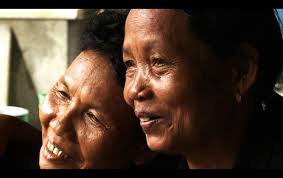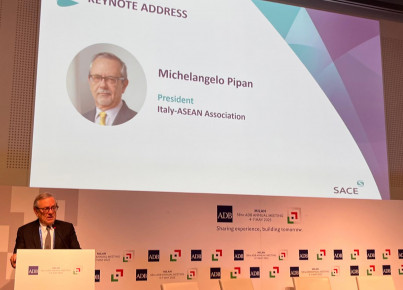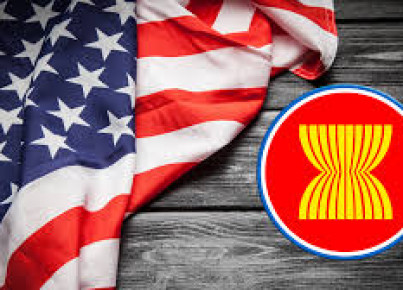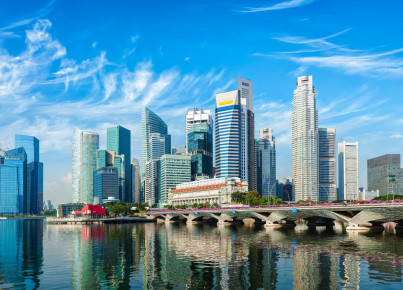Queer cinema in the region is vibrant and prolific, intersecting the representation of the Lgbtqia+ community with local traditions of sexual and gender fluidity
Article by Agnese Ranaldi
“Today I ask the village chief or the authority to recognize me. Even though I am a lesbian, I also have a heart. I love all the Khmer people. I claim my rights not to be discriminated against, and this also applies to the next generation.” Speaking is Soth Yun, one of the main characters in Two girls against the rain, a 2012 short film directed by Sopheak Sao.
Two women have known each other since the Khmer Rouge days in the 1970s. They have been together ever since. Many years later, over-50s Soth Yun and Sem Eang recount their lives in a society that has made it difficult to accommodate them. They have defied hetero-patriarchal conventions and any prejudice with respect to their ability to support themselves and feed their families. But they recount the frustration of still having to wait for official recognition from village authorities. Their story, told in a 10-minute short film and set in Cambodia, speaks for many others. Lgbtqia+ cinema in Southeast Asia highlights the injustices that stem from the lack of recognition of queer couples throughout the region.
From the 1950s to the present
The experience of the Lgbtqia+ community is a story of struggles for visibility. Amid authoritarian regimes, censorship, and social stigmas embedded in some cultures, film has been one of the most effective expressions for the queer battle in the region. Where words are not enough, images come in. Cinemas, documentaries, series, and short films have become the tool for questioning the normativity associated with sex and gender, from the first, tentative openings that occurred in the second half of the 20th century, to the last few decades, when films have begun to shed light on the link between queerness and the region's history.
There are four factors that explain the recent increase in films on the subject, according to Atit Pongpanit and Ben Murtagh. The authors of the article Emergent queer identities in 20th century films from Southeast Asia argue that the past few years have created an environment in which grassroots claims of queer communities have found space even in the most restrictive countries. Widespread access to digital technologies, the growth of platforms such as Youtube and Vimeo, an increase in public discourse on the topic through festivals such as Myanmar's “&Proud” Yangon Lgbt Film Festival (no longer active since the coup of 2021), or Indonesia's Q! Film Festival; and finally a widespread tendency to deconstruct normative sexuality and gender discourses throughout Asia, despite resistance from some governments.
The case of the Philippines
The Philippines, for example, despite an authoritarian political culture and rigid religious traditions, has a long history of films that address these issues, in part because they graft well into a society to which sexual and gender fluidity are no strangers. Starting with the Philippine film Tubog sa Ginto (“Gold Plated”) directed by Lino Brocka and considered one of the cornerstones of queer cinema throughout Southeast Asia.
Bakla's is also a story of power and self-determination. In the Tagalog language, spoken in the Philippines, bakla denotes the practice of male cross-dressing. “It is an identity built on performative cultural practice rather than sexuality,” said Filipino-born Australian filmmaker Vonne Patiag in an article in the Guardian. In one of her short films, Tomgirl, she chronicles the life of a young Filipino man in Western Sydney who receives a crash course on his culture of origin, at which his uncle reveals to him that he observes the bakla tradition.
Quella dei bakla è anche una storia di potere e autodeterminazione. Nella lingua tagalog, parlata nelle filippine, bakla indica la pratica del cross-dressing maschile. “Si tratta di un’identità costruita sulla pratica culturale performativa più che sulla sessualità”, ha detto il regista australiano di origini filippine Vonne Patiag in un articolo apparso sul Guardian. In uno dei suoi cortometraggi, Tomgirl, racconta la vita di un giovane filippino di Western Sydney che riceve un corso intensivo sulla cultura di origine, in occasione del quale suo zio gli rivela di osservare la tradizione bakla.
“They were renowned as community leaders, seen as the traditional rulers who transcended the duality of man and woman,” Patiag explains, “Many of the early accounts of the Spanish colonizers referred to mystical entities who were ‘more man than man and more woman than woman.’ Later I discovered that many people problematically translate bakla as 'gay' in English. Being a non-gender identity, the word does not directly correspond to the Western nomenclature of Lgbtqia+ identities, placing it somewhere between gay, trans and queer. When Filipinos moved to countries such as Australia and the United States, baklas were mislabeled as part of Western gay culture and quickly sexualized.” Patiag hopes that through Tomgirl, this culture can be made known and can inspire a more fluid interpretation of gender boundaries.
Diaspora
Un altro segno della vivace proliferazione di film sul tema nel Sud-Est asiatico, è il Queer East film festival di Londra. Si tratta della rassegna di film provenienti dall’Asia orientale e sudorientale e dalle comunità della sua diaspora. Presenta opere cinematografiche, ma anche arti dal vivo e icone del movimento Lgbtqia+. Per i suoi organizzatori, lo scopo è esplorare “cosa significhi essere queer e asiatici oggi”. “Gli eventi globali degli ultimi anni ci hanno ricordato ancora una volta che una rappresentazione razziale e sessuale equa e autentica è fondamentale per la nostra società – si legge sul sito del Queer Festival. – La ricchezza del patrimonio asiatico e queer costituisce una parte vitale dell’identità di questo Paese”. Attraverso un programma diversificato, il festival mira ad amplificare le voci delle comunità asiatiche e a sfidare le normatività eteropatriarcale. L’obiettivo? Eliminare le etichette e gli stereotipi associati alle rappresentazioni asiatiche queer.






